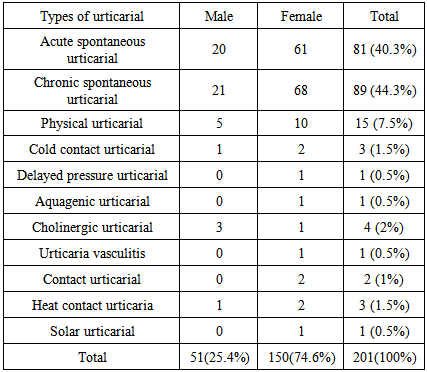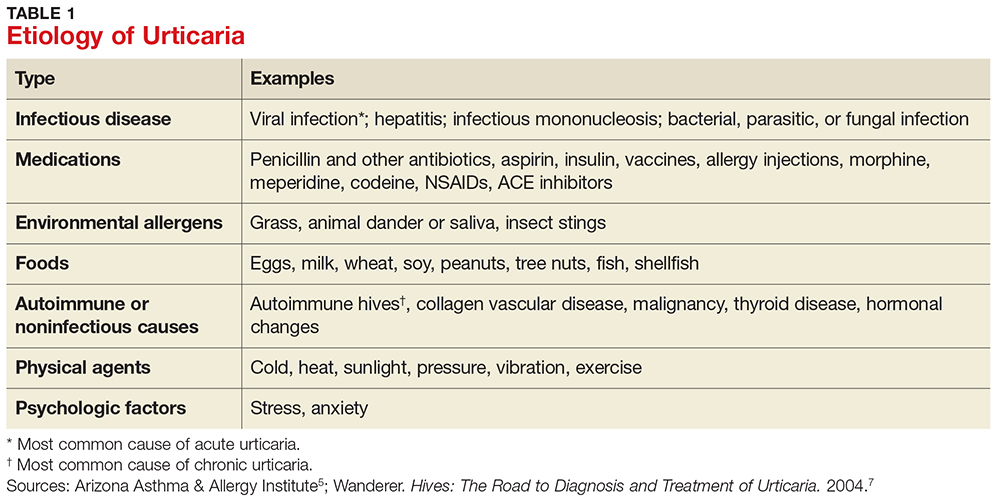Types of Urticaria

In addition to allergens, physical stimuli can cause urticaria. In addition to the presence of hives, the immune system can also react to erythroid sedimentation rate (CRP) and CRP, two other indicators of inflammation. In the case of papular urticaria, a patient’s symptoms may appear on a certain part of the body. This condition is often accompanied by itching and pain.
The most common type of urticaria is a reaction to cold or heat. The skin becomes red, swollen, and itch. The rash may be acute or chronic. Symptoms of the disorder usually subside after 48 hours. Some people, however, cannot avoid their triggers, which is why systemic antihistamine treatment is recommended. While dietary interventions are often recommended for urticaria, they should only be used in very severe cases.
In rare cases, urticaria can be caused by histamine poisoning. This occurs when the body absorbs food containing high levels of histamine. In scombroid poisoning, the person ingests spoiled scombroid fish, which causes histamine poisoning. The ingested flesh has a high concentration of histamine, causing widespread hives. In most cases, the rash will resolve once the source of the allergy is eliminated. For more severe instances, the patient may need to undergo emergency surgery.
In rarer cases, urticaria is caused by histamine poisoning. This condition can occur when the body absorbs too much of the substance that causes the histamine. In scombroid poisoning, scombroid fish has been consumed. The bacteria in the scombroid decarboxylate histidine to produce histamine. It can also be triggered by non-scombroid fish. Fortunately, most cases of this disorder resolve within a few days.
In some cases, urticaria is caused by an allergic reaction to histamine. Histamine is a chemical produced by bacteria that can cause a rash. It causes the body to release histamine. It can be toxic in large doses. Symptoms vary from individual to individual. While many patients experience temporary hives, others have chronic episodes of the disease. A physician should investigate the underlying cause.

Physical urticaria is a form of urticaria caused by rubbing or scratching. This type of urticaria occurs within minutes of the initial pressure and usually lasts for less than an hour. In rare cases, urticaria can be delayed by up to six hours, affecting parts of the body under constant pressure. Another type of uricaria is caused by exposure to cold temperatures. If the temperature in the area is cold, the symptom may be very severe.
Among the causes of urticaria, the most common is an infection. Several factors can cause urticaria, including anaphylaxis. The underlying cause should be investigated thoroughly. The most common causes include food and environmental exposures. The following is a list of known causes of urticaria. There are other causes of urticaria, and these are the most common.
History should consider exposure to allergens for papular urticaria. The doctor should ask about any contact with food, inhalants, and drugs. In addition to this, the patient should tell the doctor if they have any symptoms of hives. The symptoms of papular ureticaria usually go away on their own, but if they persist, you will find a remedy at ctrip.co.th that will suppress the symptoms.
Other causes of hives are viruses and environmental conditions. Viral infections such as the flu can also cause hives. Certain foods can also cause hives. The doctor must also be able to provide you with the appropriate medication. Urticaria treatment is selected individually depending on your condition. Your doctor can help you determine which allergens are causing your hives. If an allergy is suspected, he or she will prescribe a prescription drug for you.
Some physical factors can also cause hives. For example, a patient with hypersensitivity to a particular allergen may experience an exacerbation. Other people may experience hives without a reaction. There are some types of hives that can be caused by exposure to heat and the sun. Some other types of hives can also occur after intense exercise. This type of hives can be caused by a rash or an illness.
